
11 Aug Did CGC Grade a Bootleg? C2E2 Part 1
According to Marvel, a vendor at C2EC sold an unauthorized variant that quickly entered the Top Ten Hottest Comics of the week and commanded very high prices amid substantial controversy.
A Funnybook Fiasco
If you have read virtually any comic book blogs, tweets, IG posts, or checked in on any comic-centric youtube channels this week, you are probably somewhat familiar with a controversy some are calling #AcetateGate.
Just ahead of the annual C2E2 convention in Chicago this past weekend, Lexington, South Carolina’s Black Flag Comics announced that they would be dropping 750 copies of an exclusive “acetate” variant of their previously released Ultimate Fallout #4 Clayton Crain Facsimile Variant, priced $85 each (raw). They were completely sold out before the majority of fans (many of whom had traveled great distances specifically for this one comic) had even entered the building.
What makes this different from a standard convention-exclusive feeding frenzy is that the entire run of 750 Sold Out, mostly to Exhibitors, before the convention doors opened. This is because Black Flag Comics had set no limit to the quantity attendees could purchase. This is the first time I’ve ever heard of a convention exclusive that allowed more than a couple of copies per person. With an announced price of $85 each, raw, that generated a minimum of $63,750. More on that in a moment.
No Limits
Bystanders and those in the queue have reported across multiple social media accounts that no limit was in place and “Influencers” were allowed to cut the line.
Youtuber White Shadow (real name: Chip) reported in a vlog on Saturday evening that he witnessed a number of Whatnot sellers and IG Influencers cutting the line to purchase entire shortboxes of this rare variant. Instagram reseller Danielle of Nerdy Girl Comics posted on her own account that she had managed to pick up 75 copies for which she paid at the booth. Several other supposed bystanders had corroborated Chip’s accusations that these influencers had been allowed to forego waiting, but a photo taken by Nomasss Comics (at 8:51 AM, local time) shows that Hive Comics, Nerdy Girl, Spectral Comics, Your Comic Corner, Everything Batman, Doyle Comic Art and Illest-uminati were all waiting in line from at least that point. Similarly, Skeff of Youtube Channel Skeff’s Comic Knowledge was erroneously alleged to have circumvented the line, but there is no doubt that he was allowed to purchase 125 copies, which according to a long Facebook Live post from Black Flag owner Jason Wallace, were also being held from prior communications.
The bigger gripe is that all were allowed to purchase as many issues as they wanted.
When those standing in queue saw these large quantities changing hands without limit, they started buying quantities of 10, 20, 40, or even 85 copies at a time. By the time Chip was about 15 people from the front of the line, a Black Flag employee announced that while they were starting to run low on raw copies, there were a handful of CGC graded copies; a couple of 9.8s for $500, a couple 9.9s for $1,250 and a 10.0 for $2,500. When he was four bodies from the front, it was clear that there was a single, loosely-filled, short box of raw copies remaining, but the person actually at the front was another Youtuber/IG/Whatnot Influencer who bought all of those and wanted even more.
At that point, Jason Wallace announced that all raw copies had been sold. The people in line went ballistic. After much haranguing, a shortbox (which according to Wallace had already been promised to another collector) was located and Black Flag began selling from that. There was now a limit of two per person and the price was raised from $85 to $100, but even that supply was completely gone in a matter of minutes.
Blowback
It took no time at all for many social media accounts to start calling out Black Flag Comics for what most considered to be a very poorly handled release as well as for price gouging, but there was also an online pitchfork march for the Whatnot Sellers and Social Media Influencers who were allowed to buy in bulk seemingly without having to stand and wait. The blogosphere became an echo chamber of accusations.
Since very few of the so-called “influencers” were named, many people who were not in attendance cast speculation about who they “must” have been. This resulted in some of the resellers posting in defense of themselves and each other to ill effect.
Gem Mint took to IG and YouTube to address his own purchase, but in an attempt to defend some of his fellow influencers ended up confirming their identities for the blogosphere. After hundreds of critical comments, he removed the post and video. Nerdy Girl deleted her post, as well.
Jason Wallace had posted a Facebook Live Stream via the Black Flag Comics account on Saturday afternoon celebrating the successful sellout of the Clayton Crain Acetate Variant while walking the C2E2 convention floor. In it, he confirmed that large quantities had been set aside for bulk purchases –which was seen to skirt the definition of a “convention exclusive.”
He claimed that all the copies set aside had been pre-paid, but that claim runs counter to Nerdy Girl’s own account of her large bulk purchase. Since, by this point, conventioneers were seeing these books marked up 200-300% at other booths and frustrated that Black Flag had sold out before the doors opened, Wallace addressed his motivation for allowing bulk purchases:
“I see business opportunities, I take it… Our books are dope, our books make people money.“
In the rather long scattershot 25-minute live stream, he would go on to state his intention of setting up a fine art gallery in which, “there might even be a little mouse involved,” inferring that he was exploring some kind of partnership with Disney. As one might assume, his explanation did not go over well and he took it down along with every other reference on his various social media accounts to the Acetate Variant.
The Kicker
Clayton Crain (who created the facsimile cover) was not in attendance at C2E2 when the drama unfolded, and he has not posted any commentary about it as of this writing. Black Flag announced in a post that has since been removed that they will have two more Acetate Exclusives at Boston Comic Con this weekend for over $100 apiece: A Ghost Rider and a Venom –both Crain Variants.
Which one of each was not specified, just that they were old. In Wallace’s Live Stream he suggested that there would be two lines: one for “influencers and resellers” and a one-per-person “fan line” for which he’ll reserve 100 total copies of each. There was no explanation about who would qualify as an influencer or what their limit would be. But –in what transpires as the most bizarre part of this story, Bleeding Cool was able to confirm that these Acetates are not Marvel Approved!
And as we all know, an unapproved edition is otherwise known as a Counterfeit or a Bootleg.
The announcement of an exclusive with a print run of only 750 immediately raised flags since Marvel has a minimum purchase of 3000 copies per exclusive. Since the only difference between the prior Clayton Crain Facsimile Variant and the C2E2 exclusive is a printed acetate wrap, it stands to reason that Black Flag Comics paid Crain to design a clear cover as an incentive to sell their left-over stock. But Marvel has very strict policies in place for approving exclusive variants, and while no course of action has yet been announced, penalties seem imminent since this one is confirmed as unapproved.
But this raises an even more serious question:
Why did CGC grade an unapproved, after-market alteration? These “Acetate Variants” have a second set of staples because this unapproved transparency has merely been stapled onto an existing comic. By CGC’s own posted grading criteria, any aftermarket adjustment should get a Green label, not a Blue label. But more importantly, how on earth can a comic with four extra staple holes in it receive a 10.0 grade? CGC actually posted an official statement on the matter.
“We apologize for the short response yesterday and wanted to follow up with an explanation of our thought process behind the grade assignments. We treated them as we would any other variant cover that’s attached with an extra set of staples after the book was printed, and at times these books included the original cover as well.
“There is a precedent for acetate covers being attached to a printed book, and then graded by CGC. An example is Stray Dogs #1 from last year. An acetate variant cover was attached with an extra set of staples, to which CGC assigned a Universal grade and a notation of “acetate cover” on the label. The extra set of staples were part of the manufacturing process of attaching the acetate cover, and not considered a defect.”
Of course the Stray Dogs #1 Acetate Variant was manufactured and released by Image Comics –not by a third party, so the extra staples that appear in that issue are an original production design and not a defect, making the justification given by CGC for the Crain Acetate odd at best and disingenuous at worst.
Prior Precedent
While there were previous policies against grading Fake comics, there are several high-profile Counterfeits that were common enough in their day to have earned a certain collectibility. At least one counterfeit copy of Cerebus #1 has been graded by CGC in a blue label, but it has COUNTERFEIT listed three times on the label, including in the title. There are also high-profile and collectible counterfeits of Teenage Mutant Ninja Turtles #1 and Flaming Carrot Comics #1, but I am unaware of any actually graded copies of those latter two on the census. How is the Crain Acetate any different from these? An hour after the previous statement went live on the CGC Chatboards, this post appeared:
“CGC graded these comics only because the acetate cover was created by the artist himself.”
This statement seemingly empowers any artist whose work graces any comic cover the right to add an acetate sheet and call it a variant. Just imagine the can of worms this opens. We haven’t seen it yet, but it would be rather simple to take existing Blank Sketch Covers and print directly onto the covers to produce an edition variant rather than a unique sketch cover. And if CGC refuses to grade them they open themselves up to litigation for discriminatory business practices –especially now that they have been acquired by Blackstone, a publicly traded company under SEC governance.
I don’t think anyone imagined that a homemade variant would change the entire grading model within the comic collecting industry, but that is very possibly what has happened here.
CLICK HERE FOR PART 2
*None of the content of this article is intended as investment advise.
This is just the opinion of the columnist – Do your own research!
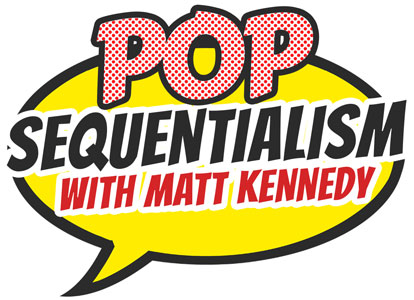
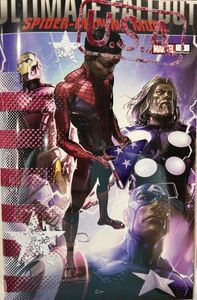
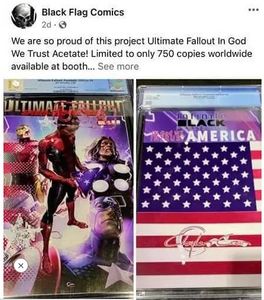
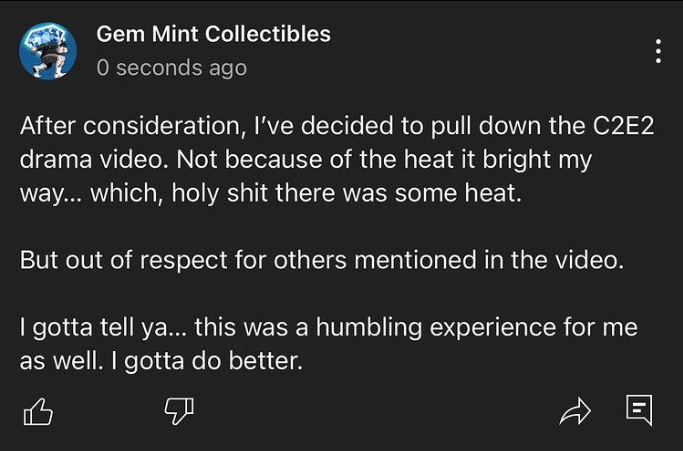
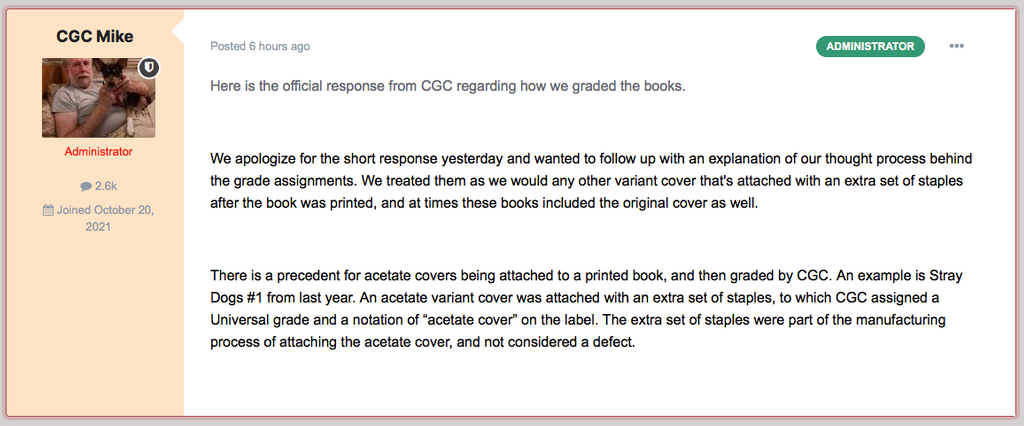
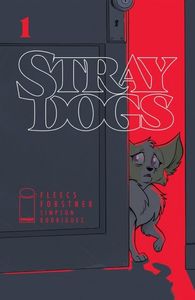

No Comments